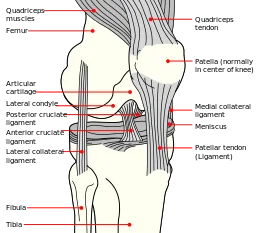If you have elected to move forward with meniscus repair surgery you are likely concerned about your recovery. Recovery from meniscus repair surgery will depend to a large degree on the individual patient. The extent of the tear also plays a role in how quickly a person will recover. The larger the tear, the larger the incision the surgeon will make, requiring more time to heal.
The surgical repair of the meniscus will include an incision to the knee, the opening of the knee and then the actual repair. Many surgeons now perform the surgery with an arthroscope which is a small tube containing a camera and light which allows them to make the repair while keeping the size of the incision significantly smaller than before. To repair the tear, a surgeon will use anchors or sutures.
The physical condition of a patient prior to going in for the meniscus repair surgery will play a large role in how quickly a person recovers. If the person was an athlete, their recovery will likely be quicker. One reason why elite athletes recover quicker than most individuals is because their bodies were already at peak performance prior to the surgery. Athletes have greater strength and range of motion to begin with which aids them have quick recovery. Most athletes are also highly motivated to return to their sport which pushes them to recover, train and get through rehab quickly. Finally, most athletes work on and off with rehabilitation centers even prior to injury and are very familiar with the rehab process and exercises allowing them to master the therapy quickly.
For the most of us, the recuperation from surgery is a brand new experience. We may have had limited strength or motion to begin with. Unlike athletes, age may also be on our side. Nonetheless, a recovery is possible.
Many medical providers are now advocating pre-hab physical therapy. This pre-hab therapy helps the ‘regular Joe’ become accustomed to how physical therapy works, understand how to perform exercises, learn the importance of a home program and perhaps learn some exercises to perform while still ‘immobile’ after surgery to help offset the weakness that develops post-surgery. Most importantly, rehab prior to surgery gets the hamstring muscles and quadriceps stronger. This is important, as most people are surprised at the rude awakening after surgery when muscle weakness sets in.
After surgery, there will be swelling of the knee. Due to the pain and swelling at the surgical site, you may be told to keep the leg immobile for a certain period of time. This will likely depend on your stregnth and size.
Physical therapy will be prescribed to help you, the patient, increase the strength of the muscles and get range of motion back. The therapy will also help a patient learn to maintain joint stability. Depending on the weight of the patient, custom exercises will be provided to help the patient build up weight tolerance on the knee.
Patience will be needed. Many doctors state that for the average patient it may be up to six weeks until a person can return to their normal routine.
Those who complete physical therapy after the meniscus surgery will want to stay motivated to perform home exercises even after formal therapy has concluded to obtain maximum recovery results.
Upon discharge, you may also be sent to a pain management physician to come up with a medication plan to help control your pain both after surgery and while recuperating in therapy. Report your pain with as much specificity as possible.
If you have a meniscus surgery soon, this video is very useful in explaining how the procedure is performed. (If blood makes you sqeamish, do no fear, there are no scenes of blood as it is an animated video with medical drawings.)
I’m Ed Smith. I am experienced in handling cases where my clients elect surgical intervention for their injuries. If you are a surgical candidate for an injury you obtained due to the negligence of someone else, please contact my office, the Edward A Smith Law Offices. Before hiring an attorney, learn about what you should look for in a personal injury lawyer. Some useful tips about hiring a lawyer can be found here.
You can contact me via telephone (916) 921-6400 (800) 404-5400, email ([email protected]) or through my website.
Learn about my office via Yelp, Google, Avvo or Facebook.

